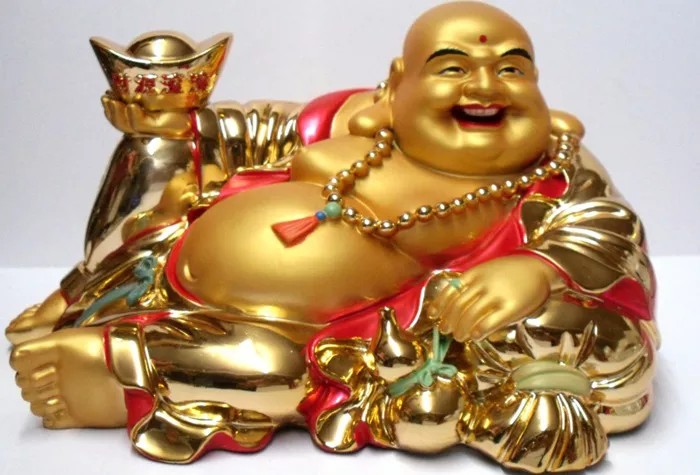Many people choose to place a Buddha statue in their home for peace, protection, and spiritual growth. But not all Buddha statues are the same. Different types of buddha statues have different meanings and energies. Knowing which statue is best for your home can bring more harmony and positive energy.
Why Have a Buddha Statue at Home?
A Buddha statue is not just a decoration. It is a symbol of the Buddha’s teachings and qualities like wisdom, compassion, and calmness. Having a Buddha statue reminds us to practice kindness and mindfulness every day. It can also create a peaceful environment and protect your home from negative energy.
Common Types of Buddha Statues
There are many buddha statues types used around the world. Each statue shows the Buddha in different poses and with different hand gestures called mudras. These represent different teachings or blessings.
1. Meditation Buddha (Dhyana Mudra)
This statue shows the Buddha sitting cross-legged with both hands resting in his lap, palms facing upward. It symbolizes deep meditation, concentration, and inner peace. This type of statue is excellent for home meditation areas or quiet spaces.
2. Laughing Buddha (Budai)
The Laughing Buddha is a popular statue showing a happy, big-bellied figure. Although not the historical Buddha, this statue represents happiness, abundance, and good luck. Many people place it near the entrance of their home to invite joy and prosperity.
3. Teaching Buddha (Dharmachakra Mudra)
This statue shows the Buddha with his hands in a gesture of teaching, symbolizing the turning of the wheel of Dharma. It reminds us to follow the Buddha’s wisdom and live a moral life. It is suitable for study rooms or places where learning happens.
4. Reclining Buddha
The Reclining Buddha shows the Buddha lying on his side, symbolizing his last moments before entering Nirvana. It represents peace, letting go, and the cycle of life and death. This statue can help remind us to live fully and with acceptance.
Which Buddha Statue Is Best for Your Home?
The best statue depends on your intention and where you want to place it. Here are some tips:
Purpose of the Statue
- Meditation and Calm: Choose the Meditation Buddha. It helps create a peaceful atmosphere for mindfulness.
- Happiness and Prosperity: The Laughing Buddha is perfect for attracting positive energy and good luck.
- Learning and Wisdom: The Teaching Buddha inspires study and moral living.
- Reflection on Life: The Reclining Buddha supports acceptance and inner peace.
Placement of the Statue
The location is very important. Avoid placing a Buddha statue on the floor or in low places. It should be placed higher than eye level, on a clean and respected altar or table.
- Living Room: A Laughing Buddha here welcomes good energy and guests.
- Meditation Space: Meditation Buddha is ideal in a quiet corner or dedicated room.
- Entrance: A Laughing Buddha or Buddha head can bless the home from the doorway.
- Study Room: Teaching Buddha encourages focus and learning.
Material and Size of Buddha Statues
Buddha statues come in many materials such as wood, stone, metal, or resin. Each material carries a different feel:
- Wood: Natural and warm, perfect for creating a calm vibe.
- Stone or Marble: Durable and grounding, good for long-lasting energy.
- Metal (Bronze, Brass): Traditional and sacred, often used in temples.
Size matters too. A small statue can be placed on a desk, while a larger one works better in the living room or garden.
How to Care for Your Buddha Statue
Caring for your Buddha statue shows respect and keeps the energy pure. Here are some simple guidelines:
- Keep it clean and dust-free.
- Place fresh flowers or incense nearby if you wish.
- Do not place shoes, trash, or clutter near it.
- If you need to move it, handle it with clean hands and care.
Common Mistakes to Avoid with Buddha Statues at Home
To maintain respect and positive energy, avoid these common errors:
- Placing the statue on the floor or in the bathroom.
- Using the statue as a simple decoration without understanding its meaning.
- Allowing clutter or disrespectful behavior around the statue.
The Meaning Behind Buddha Statues
Every Buddha statue carries a special meaning. Understanding these meanings helps deepen your connection with the statue and the Buddha’s teachings. For example, the hand mudras tell different stories:
- Abhaya Mudra: Gesture of protection and fearlessness.
- Bhumisparsha Mudra: Earth-touching gesture, calling the earth to witness enlightenment.
- Varada Mudra: Gesture of giving and compassion.
Learning about these signs helps you choose a statue that fits your spiritual needs.
Conclusion
Choosing a Buddha statue for your home is a personal and meaningful decision. Think about your goals, space, and the energy you want to bring into your life. Whether it is peace, happiness, wisdom, or protection, the right Buddha statue can support your spiritual journey.
Remember to place it respectfully, keep it clean, and honor its meaning. A Buddha statue is more than just a figure — it is a reminder of the path to kindness, mindfulness, and inner peace.

